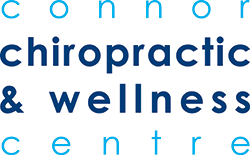Back pain from sitting at your desk too long?
Neck and Mid-Back pain are common complaints for those that spend their working hours at a desk. Our bodies are not designed to be in one position for an extended period of time. When you spend too long in a single position, something called ‘creep’ begins to happen. Creep is when your muscles, tendons and ligaments slowly creep longer and longer. This is allowing them to stretch out to accommodate the position you are in.
For a seated posture this means that your shoulders slowly creep downward and forward. The muscles and ligaments in the back of your neck slowly lengthen. This lengthening causes your posture gets worse and worse as the day goes on. Not only does the position your body is in progressively decline throughout the day, but your risk of injury also increases. While this phenomenon on it’s own can increase pain, it can also contribute to activity related injuries.
Imagine that you have just spent 8-10 hours at your desk in a similar position (including eating your lunch, seated). When you have completed your day, you feel like you sat too long\throughout the day. This prompts you to exercise to help combat a day at your desk. The downfall of this is that exercising immediately after spending hours at your desk can cause injuries because your tissues are in a state of being stretched out and not primed to fire properly.
How can you combat this you ask? Well the most obvious, yet not very convenient answer, is to take breaks every hour. Stand up, walk around, get some water etc. But while that advice is ideal, it is more than likely not convenient or possible for the majority of the workforce. Getting up sounds great, but between meetings, phone calls and getting actual work done, there isn’t always 15 minutes to spare.
Below I would like to layout some tips and tricks that I find are not only helpful but also provide you with attainable goals.
- Change your position often. This can be as simple as crossing or uncrossing your legs. Things such as switching from a chair to a swiss ball, changing from working at your desk to the kitchen counter, standing while working for 15 minutes. It’s not all about trying to get 15 minute walks in every hour. It’s more about not leaving your body in the same position for prolonged periods of time. Even moving to the couch to work for 20 minutes can be beneficial if it makes you change position.
- Stretch out your chest. When working at your desk you are in a position where your shoulders are rounded forward . This can allow your chest muscles to tighten up. Simply reaching both arms straight out to the sides and squeezing your shoulder blades together for 15 seconds. If you can do this 5 to 6 times a day it can really help!
- Don’t jump right into exercise at the end of the day. If you are going for a walk, ride, run or workout after work don’t jump right into it. Make sure you take a good 10 minutes to warm up and ‘prime’ your muscles. Taking 10 minutes to walk, stretch out your chest or do some mobility work will significantly decrease your chances of injury.
- Use your lunch to walk. This one may not be for everyone. I know there are a lot of you out there that don’t take dedicated lunch breaks. But even 5 minutes walking around your house as you gather a snack or lunch can be beneficial. The best case scenario is a 15 – 20 minute walk to combat the down time.
- Chiropractic Adjustments. While adjustments aren’t going to undo the time you spend in a single position, they can help with the symptoms of having to sit at a desk all day. Through targeted adjustments to the spine, a Chiropractor can help increase joint mobility, decrease pain and increase the function of the spine.
The one thing to remember through all of this is that no one single posture is terrible, no single position is going to undo you. But rather spending too long in a single position, any position, can be detrimental. Our bodies were designed to move, designed to continue to move throughout the day and not be in a static position. While we have to adapt to daily living now, keeping that in mind can help decrease pain and increase productivity in the long run.
Don’t hesitate to reach out if you are suffering from symptoms of a prolonged posture. While many don’t have the option to get up and move as often as they would like. Chiropractic care can be helpful in preventing and decreasing the symptoms of these less ideal prolonged postures!


